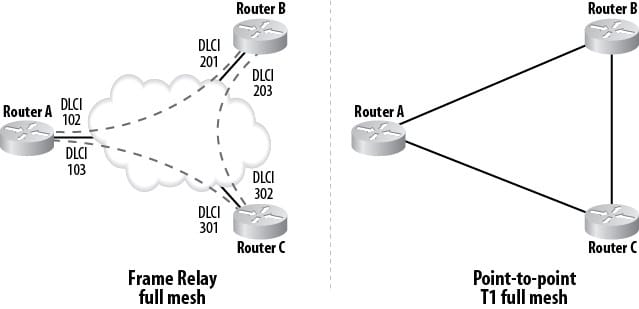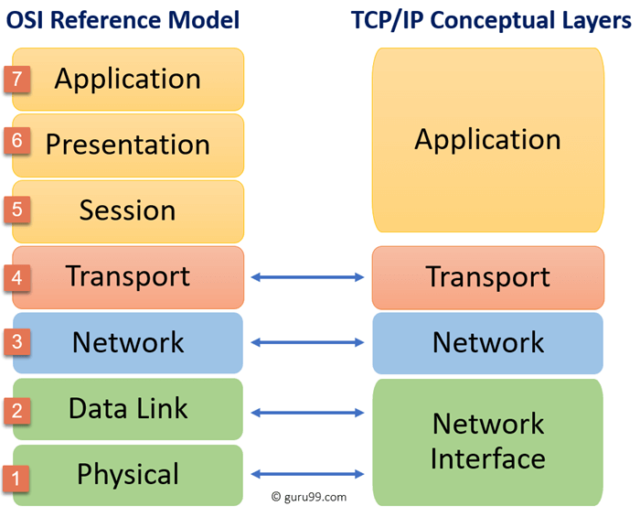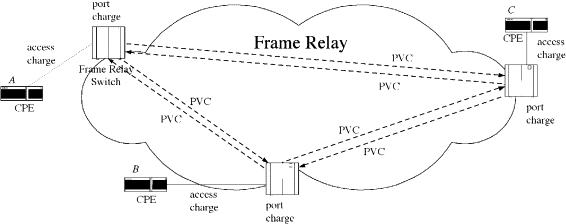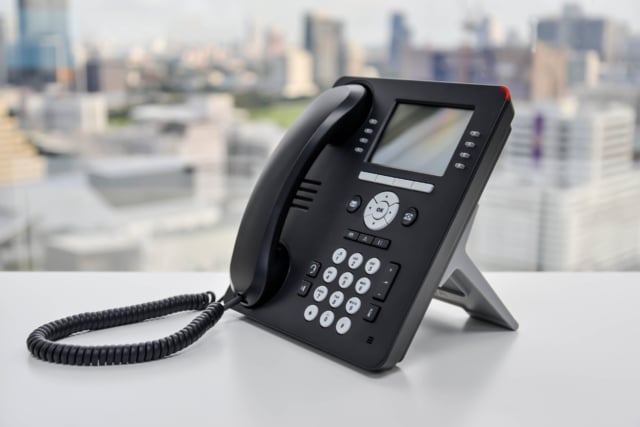What is Frame Relay?
There are a lot of technical terms and phrases that do the rounds in the world of tech and telecommunications. “Frame relay” is one such term, and if you read on, you’ll know all you need to know about it.
Frame Relay: A Quick Definition
Frame relay is a type of telecommunications technology that can be used to connect local area networks (LANs) and to transmit data between endpoints in wide area networks (WANs).
How Does Frame Relay Work?
Frame relay uses packet switching technology. This means that it breaks data, such as call data, into smaller packets, also known as frames, to transmit it through a shared frame relay network.
These data packets are then reassembled at the data’s destination. Frame relay has long been used as part of many companies’ Integrated Services Digital Network (ISDN) systems. It’s often considered to be the streamlined update to the older type of packet switching tech, X.25 packets.

Frame relay services are usually used either for transferring data between geographically separated LANs or across a WAN. Frame relay is a cost-effective alternative to point-to-point circuits, which are dedicated leased lines between LANs or in a WAN.
Frame relay is cheaper because rather than paying for the bandwidth of one or more leased lines, each router in the network shares the single, multi-access network provided by the frame relay virtual circuit.
The amount of bandwidth that each company using the virtual circuit gets is determined by the service provider’s committed information rate (CIR)–the guaranteed minimum amount of bandwidth for each circuit.
Access to a frame relay network is given via a frame relay access device (FRAD) on a company’s premises, which could be software in the router or a separate device. The FRAD connects to one of the service provider’s frame relay switch ports via the User-to-Network Interface (UNI) and creates an access link.
In a frame relay network, each circuit or access link that connects to the virtual network is terminated by a frame relay switch. The data packet sent by a router is examined at the frame relay switch, which is looking for a data link connection identifier (DLCI). That’s a number that indicates the virtual circuit that will route the packet to its destination. The frame relay then sends the packet based on the DLCI to its intended destination.
This process may also be explained in terms of data equipment, specifically data communications equipment (DCE) and data terminal equipment (DTE). In frame relay services, the DCE is the frame relay switch, as this provides the service, and the DTE is your routers, the devices that receive the service.
Frame Relay Layers

Telecommunications functions using layers. These layers are defined according to either the Open System Interconnection model (OSI) or the Internet Protocol Suite (TCP/IP).
Frame relay uses the first two layers of the OSI model, a physical layer and a data link layer, which also make up the first layer of the TCP/IP model; the network interface layer.
Physical Layer
The physical layer is the lowest or first layer protocol of the OSI and TCP/IP models. This layer deals with data in the form of bits and generally how the data is being transmitted. This data transmission usually takes place over wire, wireless, or fibre connections.
Data Link Layer
The data link layer is more important to how frame relay works, since this is the layer protocol that deals with how data (or bits) is transmitted across the physical layer.
The data link layer manages how data is broken up and reassembled. In frame relay services, the data layer is what converts the bits into frames so that it can be transmitted across the virtual circuit.
Types of Frame Relay Connections
There are two types of frame relay connection that companies use. These are switched virtual circuit (SVC) and permanent virtual circuit (PVC).

Switched Virtual Circuits
SVCs are essentially short-term virtual circuits. They are used when data needs to be transmitted across a virtual circuit and then that virtual circuit can be closed again.
A typical example of an SVC is when a user downloads a file. The SVC is created, connects the user and the file download server, and then when the download is complete the connection is immediately terminated.
Permanent Virtual Circuits
PVCs are, unlike SVCs, permanent. PVCs are a permanent connection between nodes in a frame relay network or an asynchronous transfer mode (ATM) network.
They are the more common type of frame relay connection as they are used by companies who need a permanent connection with multiple routers, such as a company that regularly makes long-distance calls between two of its offices.
Benefits of Frame Relay

Higher Data Rates
Frame relay supports the data rates of T-1 lines (1.544 Mbps) and T-3 lines (45 Mbps). It can support individual connections down to 56 Kbps and fibre connections up to 2.4 Gbps. The minimum data rate that a company can expect to receive in their frame relay network is set by the service provider’s CIR.
These data rates are high speed in comparison to the old X.25 packet switching system, as frame relay is a fast packet technology. Unlike X.25, frame relay does not use error correction. This means it doesn’t correct errors in data in a frame. If errors are detected, the frame is dropped. Instead, it is up to the endpoints of the connection to detect errors and handle retransmission of dropped frames.
Can Handle Data in Bursts
One of the reasons frame relay is often preferred to leased lines is because companies are not constantly transmitting data. This means that the bandwidth of leased lines is rarely being used in full, especially if lines are required to lesser-used routers. Frame relay resolves this problem by using bursty technology and shared bandwidth, set by the CIR.
Although frame relay service providers set a CIR, the frame relay doesn’t restrict service to this minimum. Instead, frame relay allows for bursting. This is when a user may need to use more data than the minimum CIR, and they can do so by borrowing bandwidth that is not being used within the virtual network for free.
The use of bandwidth in a frame relay’s digital network is bursty in nature, so companies don’t need to worry about idle channels or exceeding their minimum CIR.
Lower Overheads
In comparison to dedicated lines, frame relays are much cheaper for companies that need to maintain connections between multiple routers across a WAN. This is because the company is not paying for the full bandwidth of each access line as they would for leased lines. Instead, the cost of the bandwidth is shared by everyone using it.
This works out cheaper because frame relay services use statistical multiplexing where the bandwidth is shared between active connections only. This lowers the costs because users don’t have to pay for idle connections or for or any excess capacity needed for peak traffic periods.
Local Management Interface (LMI) Enhancements
Since the inception of frame relay, enhancements have been developed to improve frame relay services and their functionality in complex networks.
Examples of LMIs developed include:
- A keepalive mechanism, which verifies data flow and provides flow control.
- A status mechanism, which creates real-time status reports on the DLCIs known to the switch.
- LMI multicasting extensions, which save bandwidth by allowing routing updates and messages that alert user devices to the addition, deletion, and presence of multicast groups.
Frame Relay Vs. Leased Lines
Frame relay differs from leased lines because it does not require individual connections between routers. Instead, all routers connect to a shared virtual network that transmits data packets, or frames, between end points.
As we have seen, this is more cost-effective because users aren’t paying for bandwidth on every line. Instead, users pay for shared bandwidth that can be used in bursts. This is more cost-effective and is easier to scale than leased lines, as new routers can be added to the network with ease and without the costs of a whole new line.
Frame Relay Vs. Newer Technology

This guide has mentioned frame relay vs leased lines, as frame relay was often chosen over leased lines when it was created.
Frame relay was developed in the 1990s and offered a cost-effective alternative to point-to-point leased lines and the older X.25 packet switching technology. Over time, however, the popularity of frame relay has decreased.
Frame relay was a direct competitor of another form of packet switching technology, known as asynchronous transfer mode (ATM). ATM had more guaranteed bandwidth than frame relay and higher data rates, but it was more expensive than frame relay.
Both frame relay and ATM were gradually replaced by Multiprotocol Label Switching (MPLS). MPLS allows for a blending of frame relay, ATM, ethernet, and Internet Protocol (IP) networks into a single infrastructure.
This has helped companies integrate their telecommunications in one system that could transmit all sorts of data, including voice and video data transfer.
There are other sorts of IP networks used by companies. These networks, such as cloud virtual private networks (VPNs) and Voice over IP (VoIP), connect computers using their unique internet protocol (IP) addresses and they use the internet for data transmission.
IP networks provide a secure connection over a public network and are a cheaper, mainstream alternative to older frame relay services.
How Can RingCentral Improve Your Communications?
Frame relay was once at the forefront of telecommunications, but it has been largely replaced by MPLS and IP networks. The internet has transformed telecommunications so that companies can transmit data and make voice and video calls online rather than over LANs and WANs.
One of the biggest attractions of these newer technologies is the possibility for companies to integrate their communications, streamline data transfer, and lower telecommunication costs. RingCentral MVP™ is a seamless, cloud-based communication tool that offers reliable, global, and secure communication for businesses across the world.
Originally published Oct 28, 2021

